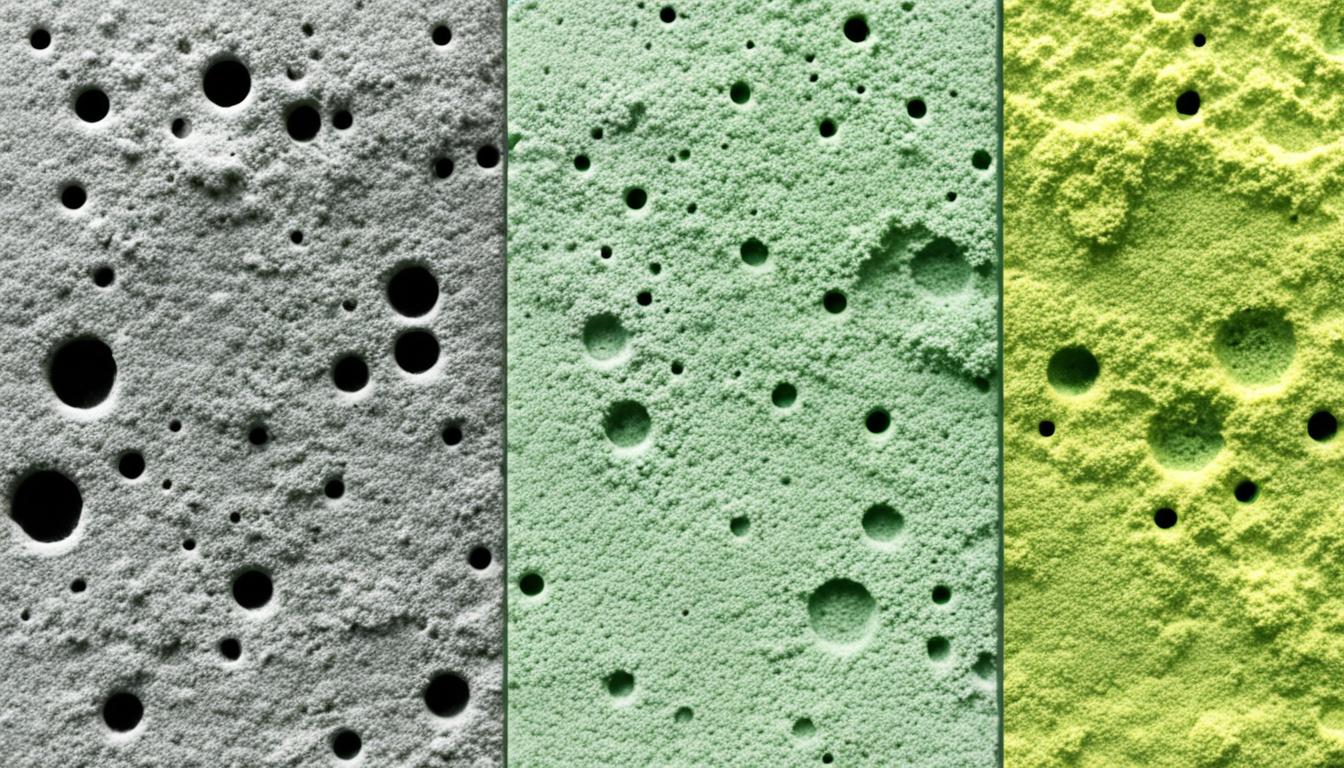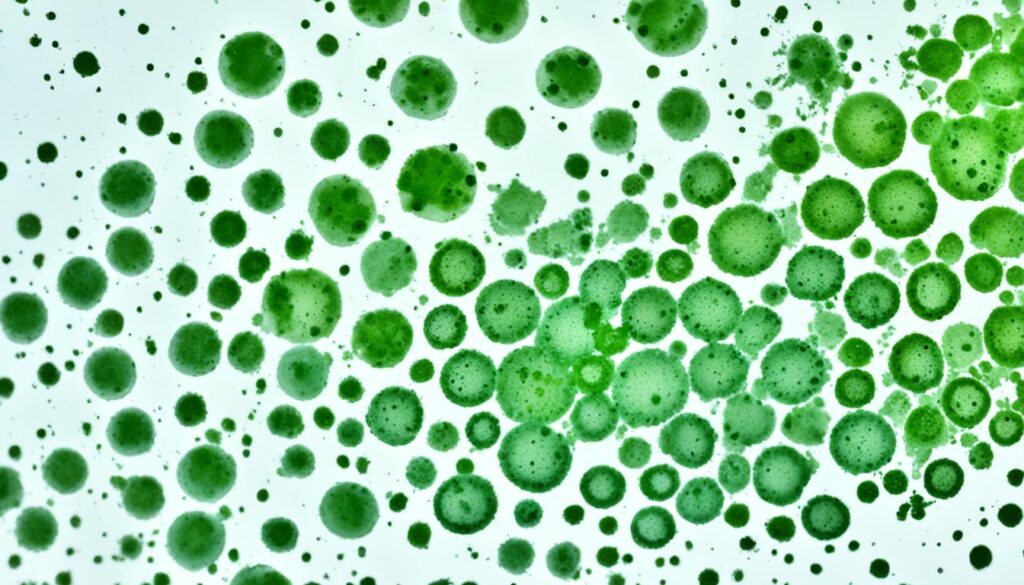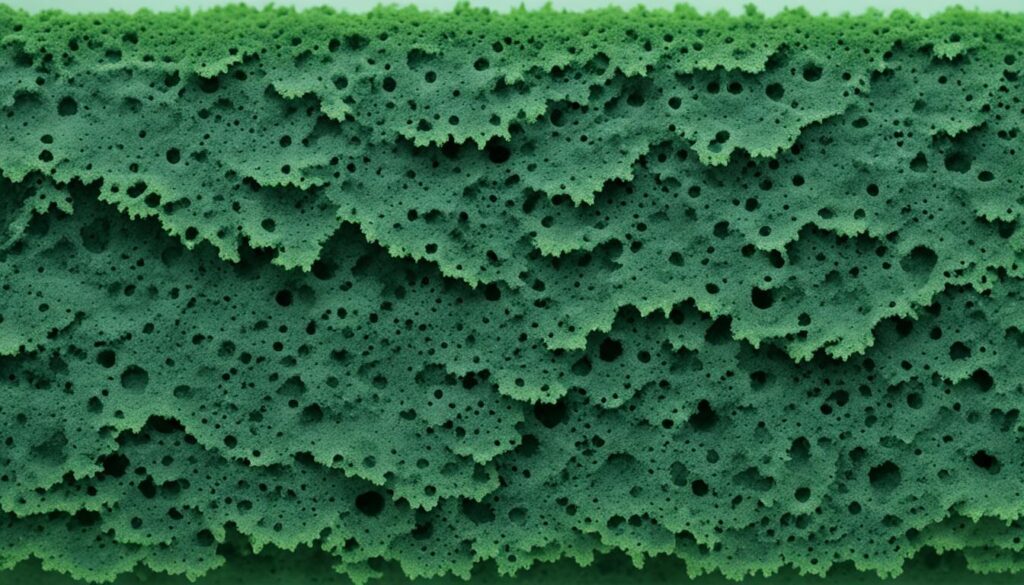
Common Types of Mold in Homes & Identification
Discovering mold in your home can be concerning, but it’s essential to understand the different types of mold that can be found and how to identify them. Knowing what you’re dealing with allows for appropriate remediation and helps maintain a healthy living environment. In this article, we will provide an overview of the common types of mold that can be found in homes, along with tips for identification.
Mold is a type of fungus that thrives in damp and humid environments. It can grow on various surfaces, including walls, ceilings, carpets, and even furniture. Mold not only affects the aesthetic appeal of your home but also poses potential health risks to you and your family members.
This article aims to equip you with knowledge about the most prevalent types of mold found in homes. We will discuss their characteristics, appearance, common locations, and potential health effects. By understanding these aspects, you will be better prepared to identify mold and take the necessary steps for remediation.
As we delve into the specific types of mold in the upcoming sections, remember that mold identification can be challenging without proper expertise. However, familiarizing yourself with the common types of mold and their visual cues can help you spot potential issues early on.
Key Takeaways:
- Understanding the different types of mold in homes is crucial for appropriate remediation.
- Mold thrives in damp and humid environments and can affect various surfaces in your home.
- Identifying mold can be challenging, but knowing their characteristics can help spot potential issues early on.
- This article will provide information on common types of mold, their appearance, common locations, and potential health effects.
- If you suspect mold in your home, it’s advisable to seek professional help for accurate identification and remediation.
Understanding Mold and Its Impact on Indoor Air Quality
Mold is a common, naturally occurring fungus that can be found both indoors and outdoors. It thrives in damp and humid environments, making our homes an ideal breeding ground for mold growth. Understanding the impact of mold on indoor air quality is crucial for maintaining a healthy living environment.
When mold spores are present in the air we breathe, they can lead to a variety of health issues, especially for individuals with respiratory conditions or weak immune systems. Mold spores can trigger allergic reactions, cause respiratory symptoms such as coughing and wheezing, and even contribute to the development of asthma in susceptible individuals.
Did you know? According to the Environmental Protection Agency (EPA), exposure to mold indoors can cause a range of health effects, including nasal stuffiness, throat irritation, eye irritation, and skin irritation.
Additionally, mold releases volatile organic compounds (VOCs) into the air, which can potentially have harmful effects on our health. VOCs emitted by mold can cause headaches, dizziness, nausea, and fatigue when inhaled.
Quote: “Indoor air quality is closely linked to mold growth. The presence of mold in our homes can compromise the air we breathe and contribute to a range of health problems.” – Dr. Jessica Thompson, Indoor Air Quality Specialist
To improve indoor air quality and prevent mold growth, it’s important to address any moisture issues in our homes. This can include fixing leaks, improving ventilation, and drying any wet surfaces or materials promptly. By controlling moisture levels, we can create an environment that is less conducive to mold growth and ensure better air quality.
In the upcoming sections, we will delve into the different types of mold commonly found in homes, discuss their identification, characteristics, and potential health risks. We will also provide practical tips for preventing mold growth and the importance of professional mold remediation services.
Cladosporium
Cladosporium is one of the most common types of mold found in homes. It has a powdery texture and typically appears as dark green or black spots. This mold thrives in damp environments with high levels of humidity, making bathrooms, basements, and kitchens susceptible areas for its growth.
Identifying Cladosporium mold can be challenging as it often resembles other types of mold. However, Cladosporium can be distinguished by its distinct olive-green color and a suede-like or velvety texture. It can also grow in colonies and form circular patterns on surfaces.
“Cladosporium is frequently found in homes due to its ability to grow on various surfaces and survive in different climate conditions. Its presence can indicate underlying moisture issues, which should be addressed promptly.”
When it comes to the potential health risks associated with Cladosporium exposure, individuals with respiratory conditions, allergies, or compromised immune systems are more susceptible to adverse reactions. For most people, Cladosporium mold may cause mild to moderate allergic reactions such as sneezing, coughing, itchy eyes, and skin irritation.
To effectively combat Cladosporium mold growth, it is essential to address any moisture issues and ensure proper ventilation in areas prone to dampness. Regular cleaning and maintenance can also help prevent its development. In cases of extensive mold growth or persistent health issues, it is recommended to seek professional assistance for mold remediation.
Cladosporium Identification Checklist:
- Olive-green or black spots
- Suede-like or velvety texture
- Thrives in damp environments
- Commonly found in bathrooms, basements, and kitchens
- Potential health risks for individuals with respiratory conditions, allergies, or compromised immune systems
By being aware of the characteristics and potential health risks associated with Cladosporium mold, homeowners can take necessary precautions to prevent its growth and ensure a healthy living environment.

Aspergillus
Aspergillus is a common type of mold that can be found in homes, and it is essential to understand its distinct features, common locations, and potential health effects. By learning how to identify Aspergillus mold, homeowners can take appropriate steps to address any issues promptly.
Aspergillus mold typically appears as powdery or fuzzy patches that can be various colors, including green, yellow, white, or black. It tends to grow in areas with high moisture levels, such as damp basements, bathrooms, or kitchens. This mold can also thrive on materials such as wood, paper, fabric, and insulation.
Identifying Aspergillus mold requires a keen eye for its characteristic features. Its spores have a distinctive shape, resembling a long flask with a small neck. These spores are microscopic and can easily become airborne, posing a risk of inhalation.
Health Effects of Aspergillus Mold
Exposure to Aspergillus mold can lead to various health effects, especially for individuals with weakened immune systems or respiratory conditions. Common symptoms of Aspergillus exposure include:
- Coughing and wheezing
- Shortness of breath
- Nasal congestion and sneezing
- Eye irritation
- Fever
In some cases, Aspergillus mold can cause more severe infections, such as invasive aspergillosis, which primarily affects individuals with compromised immune systems. It is crucial to seek medical attention if you suspect Aspergillus mold exposure and experience persistent or worsening symptoms.
Aspergillus mold identification is an essential first step in addressing any potential mold issues in homes. If you suspect the presence of Aspergillus mold, it is recommended to consult a professional mold inspector or remediation specialist for a thorough assessment.
Stachybotrys Chartarum
Stachybotrys Chartarum, commonly known as black mold, is a particularly concerning type of mold due to its potential health risks. This section will provide an overview of its appearance, preferred environments, and the implications it can have on health. Additionally, we will emphasize the importance of seeking professional remediation when dealing with Stachybotrys Chartarum mold.

Appearance
Stachybotrys Chartarum mold is typically black in color, with a slimy or wet texture. When it grows on surfaces, it often appears as greenish-black spots or patches. The mold can produce a musty odor that is noticeable in affected areas.
Preferred Environments
Stachybotrys Chartarum mold thrives in damp and water-damaged environments. It can commonly be found in areas with excessive moisture, such as leaky pipes, roofs, or basements. This type of mold requires a high cellulose content present in materials such as wood, drywall, or paper for optimal growth.
Health Implications
Exposure to Stachybotrys Chartarum mold can lead to various health issues, especially when individuals come into direct contact with the mold or inhale its spores. Symptoms may range from allergic reactions such as coughing, sneezing, and skin irritation to more severe respiratory problems and even neurological effects in some cases.
It is essential to address Stachybotrys Chartarum mold promptly to mitigate the health risks associated with its presence. Seeking professional remediation services is crucial to ensure thorough removal and minimize the likelihood of mold recurrence.
Penicillium
Penicillium is a type of mold that can commonly be found in various indoor environments, including homes. It belongs to the fungal genus Penicillium, which comprises over 300 different species.
This mold has a distinctive appearance, typically characterized by its velvety texture and green, blue, or white coloration. It often forms circular colonies and produces spores that can easily spread through the air.
The most common sources of Penicillium mold in homes include damp areas such as bathrooms, kitchens, basements, and areas affected by water leaks or flooding. It thrives in environments with high humidity and organic materials, such as wood, wallpaper, and carpet.
Identifying Penicillium mold requires close observation and attention to detail. If you notice any signs of mold growth in your home, it’s essential to take immediate action to prevent further contamination and potential health risks.
Exposure to Penicillium mold can lead to various health problems, particularly for individuals with weakened immune systems or respiratory conditions. Common symptoms of mold exposure may include allergic reactions, respiratory issues, skin irritation, and eye irritation.
If you suspect Penicillium mold in your home, it’s advisable to seek professional assistance for proper identification and remediation. Professional mold inspectors have the necessary expertise and tools to assess the extent of the mold growth and recommend effective strategies for removal and prevention.
Key Points:
- Penicillium mold is commonly found in indoor environments, including homes.
- It has a velvety texture and can appear green, blue, or white in color.
- Damp areas and high humidity environments are common sources of Penicillium mold in homes.
- Exposure to Penicillium mold can cause allergic reactions, respiratory issues, and skin or eye irritation.
- Professional assistance is recommended for accurate identification and safe removal of Penicillium mold in homes.
Alternaria
Alternaria is a common outdoor mold that can also find its way inside homes. It thrives in damp and humid environments, making bathrooms, kitchens, and basements the ideal breeding grounds for its growth. This mold is commonly found on damp surfaces, such as wallpaper, carpet, fabrics, and even in air conditioning systems.
Identification of Alternaria mold is relatively straightforward. It appears as dark green or brown patches with a fuzzy texture. As it grows, it may develop a velvet-like look. Alternaria mold can also produce spores that are dispersed through the air, contributing to indoor air pollution.
Exposure to Alternaria mold can trigger allergic reactions in sensitive individuals. Common symptoms include sneezing, coughing, itchy eyes, and a runny nose. In some cases, prolonged exposure to Alternaria spores can lead to asthma attacks or worsen existing respiratory conditions.
To effectively manage Alternaria mold in your home, it is essential to address the underlying moisture issue that is promoting its growth. Repair any leaks, improve ventilation, and use dehumidifiers in areas prone to high humidity. Regularly cleaning and keeping surfaces dry can also help prevent the proliferation of Alternaria mold.
“Prevention is key when it comes to Alternaria mold. By maintaining a dry and well-ventilated environment, you can significantly reduce the risk of mold growth.”
Common Characteristics of Alternaria Mold
| Appearance | Location | Potential Health Effects |
|---|---|---|
| Dark green or brown patches | Damp surfaces, such as wallpaper, carpet, fabrics, and air conditioning systems | Allergic reactions, asthma attacks, respiratory issues |
Prevention and Remediation of Mold in Homes
Taking preventative measures and addressing mold issues promptly is crucial for maintaining a healthy living environment. In this section, we will provide practical tips for preventing mold growth in homes and discuss the importance of professional mold remediation services.
Preventing Mold Growth
- Keep humidity levels in check: Ensure proper ventilation, use dehumidifiers in damp areas, and fix any plumbing leaks to prevent excessive moisture accumulation.
- Improve airflow: Use fans and open windows to increase air circulation, especially in areas prone to moisture, such as bathrooms, kitchens, and basements.
- Proper insulation: Insulate walls, floors, and ceilings to prevent condensation and moisture buildup.
- Regular cleaning: Clean and dry areas prone to moisture regularly, such as bathroom tiles, shower curtains, and window sills.
- Avoid carpet in damp areas: Instead, opt for moisture-resistant flooring materials like tiles, vinyl, or hardwood in bathrooms, basements, and other moisture-prone areas.
- Monitor indoor plants: Ensure proper drainage and limit the number of indoor plants, as excessive moisture can promote mold growth.
- Remove moldy materials: Discard any moldy items, such as carpets, furniture, or insulation, that cannot be effectively cleaned or dried.
Professional Mold Remediation Services
If you suspect mold in your home or find extensive mold growth, it is essential to seek professional mold remediation services for thorough removal and treatment. Professional mold remediation offers the following benefits:
- Expertise: Trained professionals possess the knowledge and experience to identify the root cause of mold growth and conduct proper remediation.
- Effective removal: Professionals have access to specialized equipment and techniques to safely and effectively remove mold, preventing further spread or reoccurrence.
- Prevention of health risks: Mold remediation professionals take necessary precautions to minimize exposure to mold spores, protecting the health and well-being of occupants.
- Thorough assessment: Professionals can conduct comprehensive mold assessments, identifying hidden mold growth and addressing underlying moisture issues.
- Long-term solutions: Mold remediation experts can provide recommendations for preventing future mold growth, ensuring a mold-free environment in the long run.
In cases of extensive mold growth or when dealing with toxic molds such as Stachybotrys Chartarum, it is crucial to rely on professional mold remediation services. Attempting DIY remediation in such situations can lead to further exposure and health risks.
By taking proactive measures to prevent mold growth and seeking professional mold remediation when necessary, homeowners can ensure a safe and healthy living environment for themselves and their families.
| Mold Prevention Tips |
|---|
| Keep humidity levels in check |
| Improve airflow |
| Proper insulation |
| Regular cleaning |
| Avoid carpet in damp areas |
| Monitor indoor plants |
| Remove moldy materials |
Conclusion
In conclusion, being aware of the common types of mold that can be found in homes and knowing how to identify them is essential for maintaining a healthy indoor environment. Mold growth can have significant implications for both air quality and health, making it crucial to address any mold issues promptly.
Throughout this article, we have discussed some of the most common types of mold found in homes, including Cladosporium, Aspergillus, Stachybotrys Chartarum, Penicillium, and Alternaria. By understanding the characteristics of these molds and where they are typically found, homeowners can take proactive measures to prevent mold growth.
If you suspect mold in your home, it is always recommended to seek professional help. Fix Mold Miami is a trusted mold remediation service. You can contact them at 305-465-6653 for a professional mold assessment. Remember, early detection and appropriate remediation methods are key to ensuring the well-being of your household.




